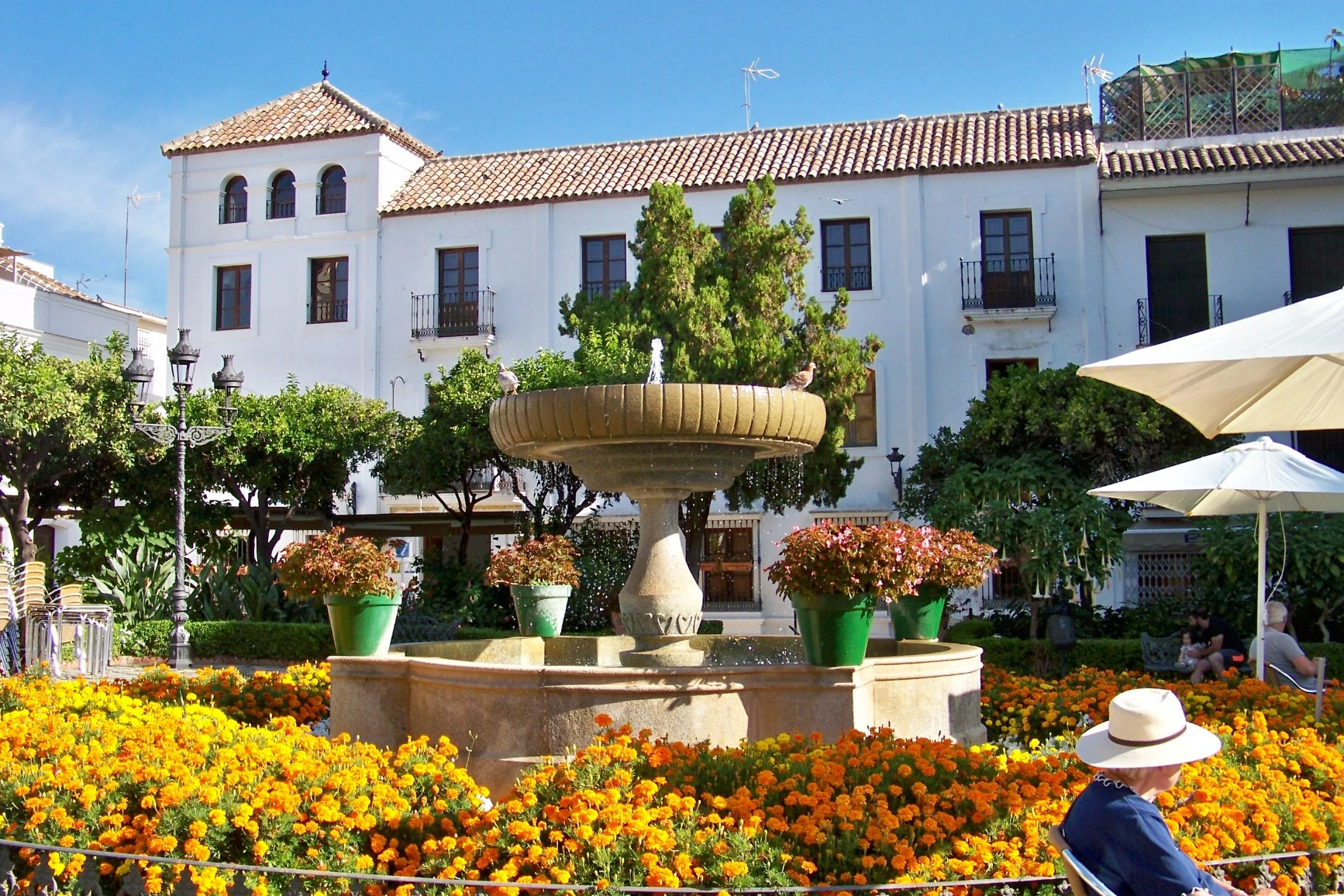
Plaza de las Flores

Plaza de las Flores
The urban planning of Estepona during the 19th century was marked by the expansion towards the east. This expansion of the town is endowed with a large square, where the most important houses of Estepona were built at that time.
During its history its name has varied, from its original popular nomenclature of Plaza Nueva, or Plaza de la Cárcel (for being located here, as part of the dependencies of the old Consistorial house), it was changing its name with the successive political ups and downs being called: plaza de la Constitución (in homage to the Constitution approved in 1812), Plaza del Rey, (in recognition of Fernando VII), de José Antonio (Falangist politician), until reaching the current name of Plaza de las Flores.
Today it is a large pedestrian square, the center of life in Estepona, with several public buildings (Casa de las Tejerinas, Tourist Office), imposing houses of the nineteenth century, a large central fountain and, above all, a garden full of flowers that give it its name.

